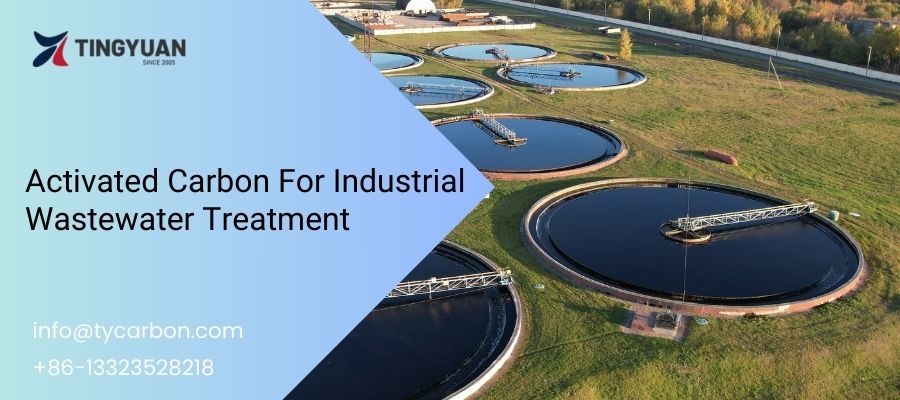Water is the source of life, but wastewater produced during industrial processes often contains various toxic pollutants, such as organic compounds, heavy metals, and color substances, which pose serious threats to the environment and human health.
Activated carbon, as an efficient adsorbent, plays an increasingly important role in wastewater treatment by effectively removing various harmful substances from water.
This article will detail the application of activated carbon in industrial wastewater treatment to help you choose the right activated carbon product.
Sources And Hazards Of Pollutants In Industrial Wastewater
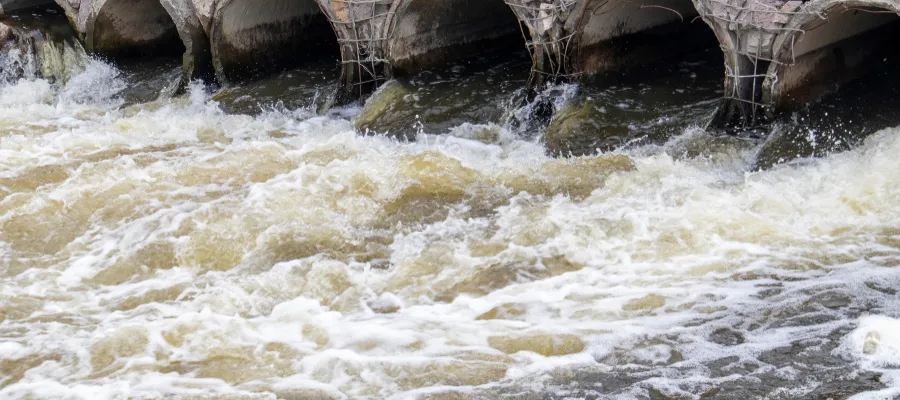
Industrial wastewater contains a variety of harmful substances that can severely impact human health, aquatic life, and the entire ecosystem. The main harmful substances in industrial wastewater include:
- Organic pollutants: Such as benzene, toluene, phenolic compounds, petroleum products, etc. These substances are toxic, difficult to degrade, and can cause long-term water pollution.
- Heavy metals: Such as lead, mercury, cadmium, chromium, etc. These heavy metals are bioaccumulative and toxic, entering the human body through the food chain, leading to chronic poisoning and various health problems.
- Suspended solids and solid waste: These materials cause water turbidity and affect the survival of aquatic organisms.
- Acidic and alkaline substances: Such as sulfuric acid, hydrochloric acid, etc., can alter the pH of water bodies, disrupting aquatic ecosystems.
Industrial wastewater poses multiple threats to the environment and human health. Therefore, it is essential to treat industrial wastewater using activated carbon.
Industrial Wastewater Treatment Process
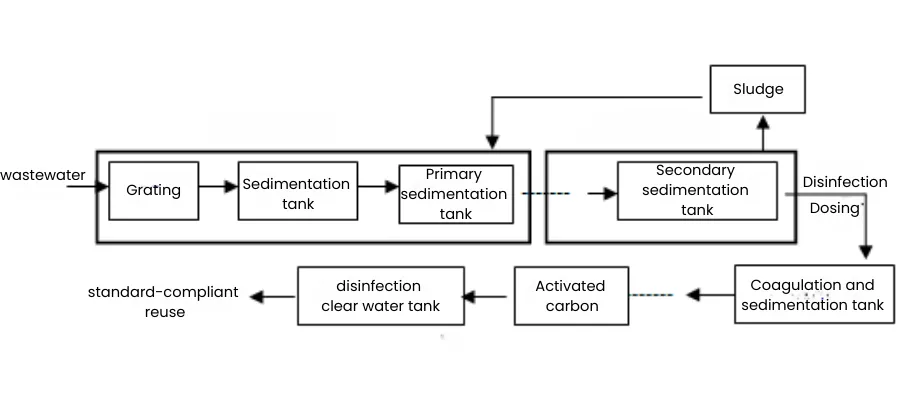
The industrial wastewater treatment process is typically divided into pretreatment, primary treatment, secondary treatment, and tertiary treatment.
Each stage has specific goals and methods to ensure that the wastewater meets environmental standards before discharge. Here is a detailed overview of the industrial wastewater treatment process:
Pretreatment Stage
- Collection: Collect wastewater from domestic, industrial, and other sources through pipes or channels.
- Screening: Remove large particles from wastewater using screens, grit chambers, etc., such as leaves, stones, etc.
- Water quality adjustment: Adjust parameters like pH and suspended solids concentration to make the wastewater suitable for subsequent treatments.
Primary Treatment Stage
- Sedimentation: Introduce pretreated wastewater into a sedimentation tank where gravity helps settle suspended solids to the bottom.
- Flotation: Inject gas to create buoyancy, causing suspended solids to float and be removed from the surface.
- Activated sludge process: Use microorganisms in the activated sludge tank to convert organic substances into inorganic matter, which then settles to the bottom.
Secondary Treatment Stage
- Aerobic treatment: Introduce oxygen and activated sludge to further degrade organic substances.
- Aerobic digestion: Further degrade organic substances through microbial action in the aerobic digestion tank.
- Sedimentation: Allow microorganisms and sludge to settle in a sedimentation tank after aerobic treatment.
Tertiary Treatment Stage
- Filtration: Use filter media in filtration tanks to remove particles and microorganisms.
- Activated carbon adsorption: Use activated carbon layers to adsorb residual organic pollutants and heavy metals.
- Disinfection: Disinfect the treated water to kill bacteria and viruses, ensuring safety.
Role Of Activated Carbon In Industrial Wastewater Treatment
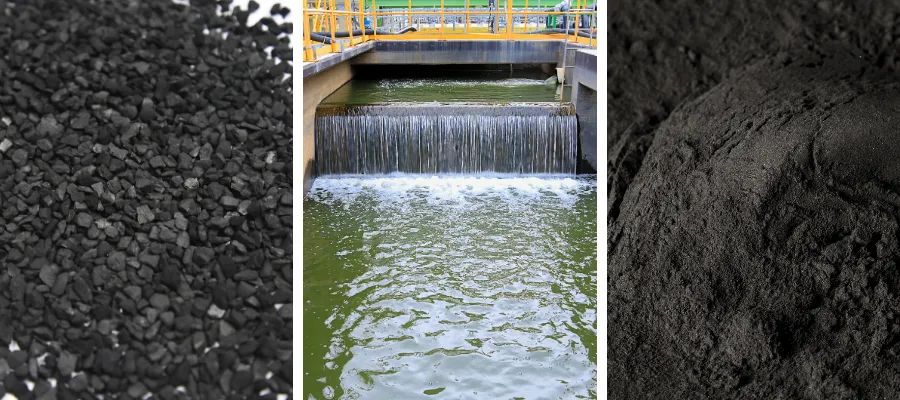
In the industrial wastewater treatment process, activated carbon adsorption usually occurs at the deep purification stage. At this point, most suspended and settleable solids have been removed, and activated carbon acts as an efficient filter to adsorb residual trace organic pollutants, heavy metals, and color, further purifying the water.
Activated carbon’s effectiveness in industrial wastewater treatment stems from its unique physical and chemical properties. It has a highly developed pore structure and large surface area, allowing it to capture and firmly adsorb various small pollutant molecules in wastewater.
Additionally, the rich chemical functional groups on its surface can chemically adsorb and react with certain pollutants, enhancing its removal capacity.
Choosing Activated Carbon For Industrial Wastewater Treatment
Selecting the right activated carbon is crucial to ensuring the treatment effect in industrial wastewater treatment. Different types of industrial wastewater have varying pollutants and concentrations, necessitating tailored activated carbon choices:
Granular Activated Carbon
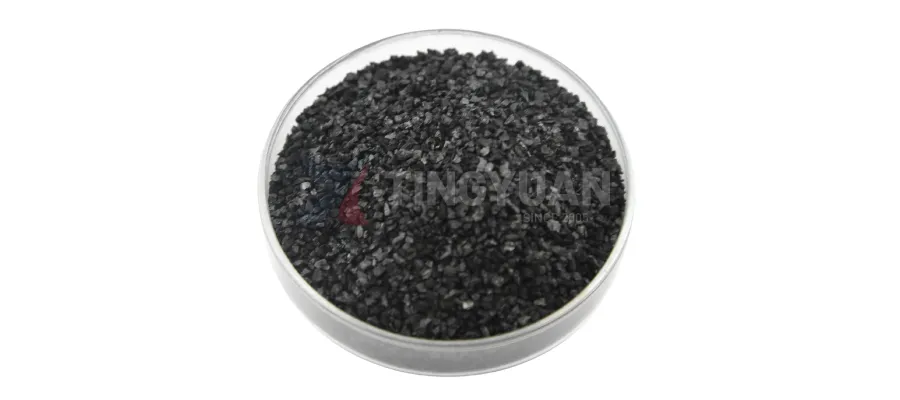
Granular activated carbon, made from high-quality anthracite using advanced processes, has a large surface area and a high adsorption capacity, effectively removing pollutants from industrial wastewater.
It is used for continuous adsorption, where the wastewater is passed through a carbon adsorption bed for purification. This method, similar to a fixed bed, is also known as dynamic adsorption.
Relevant Products:
8-30 & 12-40 Mesh Coal Granular Activated Carbon For Water Treatment
Powdered Activated Carbon
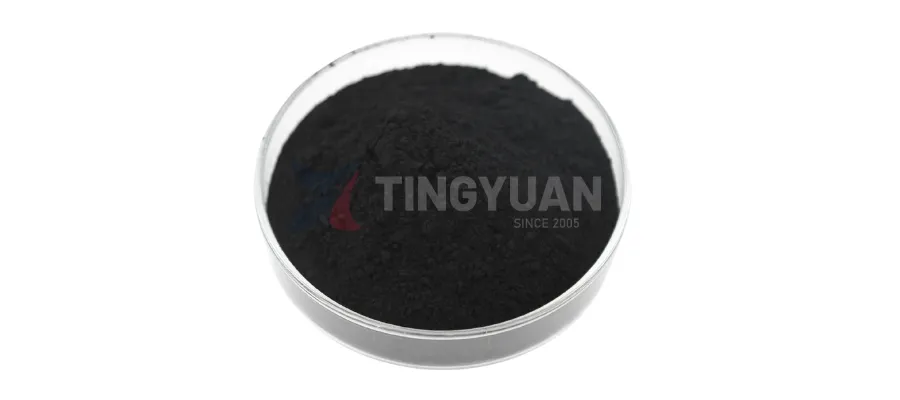
Powdered activated carbon has a large surface area and a rich microporous structure, enabling it to efficiently adsorb various organic pollutants, heavy metal ions, and other hard-to-degrade substances in wastewater.
It is used for batch adsorption, where powdered carbon is added to the water being treated, mixed thoroughly, and separated by sedimentation or filtration. This method is also known as static adsorption.
Relevant Products:
Coal Powdered Activated Carbon For Water Treatment
Get a competitive quoteConclusion
Activated carbon, as a powerful adsorbent, efficiently removes organic pollutants, heavy metals, and other harmful components from water, playing a crucial role in environmental protection.
Our company has extensive experience in the production and application of activated carbon, providing customized solutions for customers.
Whether it is coal-based activated carbon, coconut shell activated carbon, or wood-based activated carbon, we can match different types of industrial wastewater to ensure compliance with treatment standards.
If you have any needs in industrial wastewater treatment, please feel free to contact us. Our technical experts will provide you with professional guidance and support.
Whatsapp: +86-13323528218
Email: info@tycarbon.com

